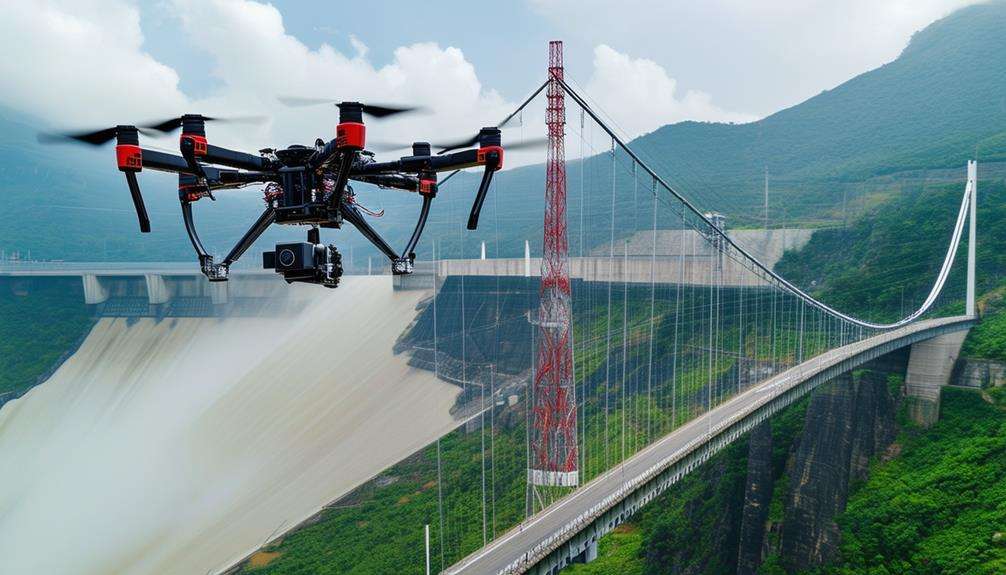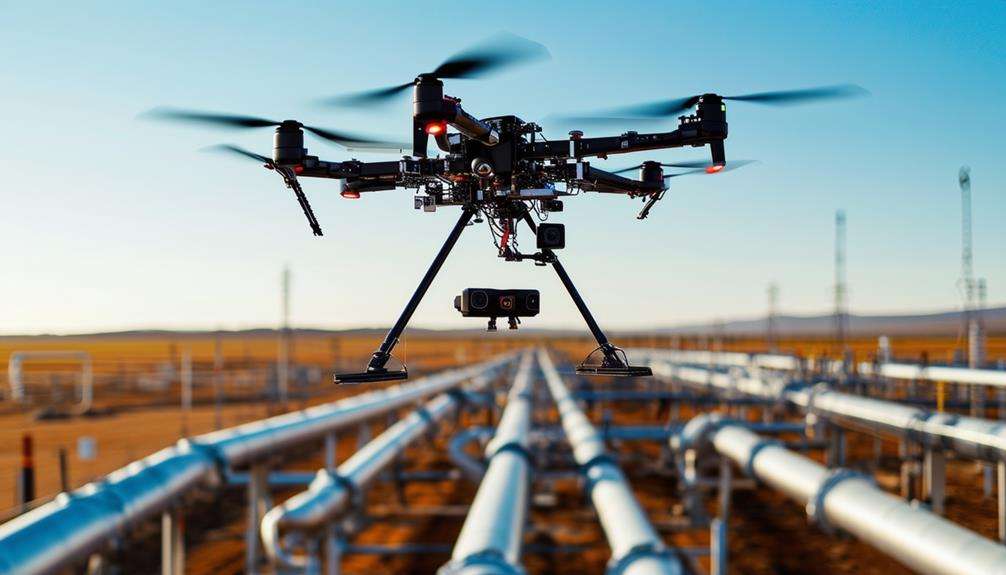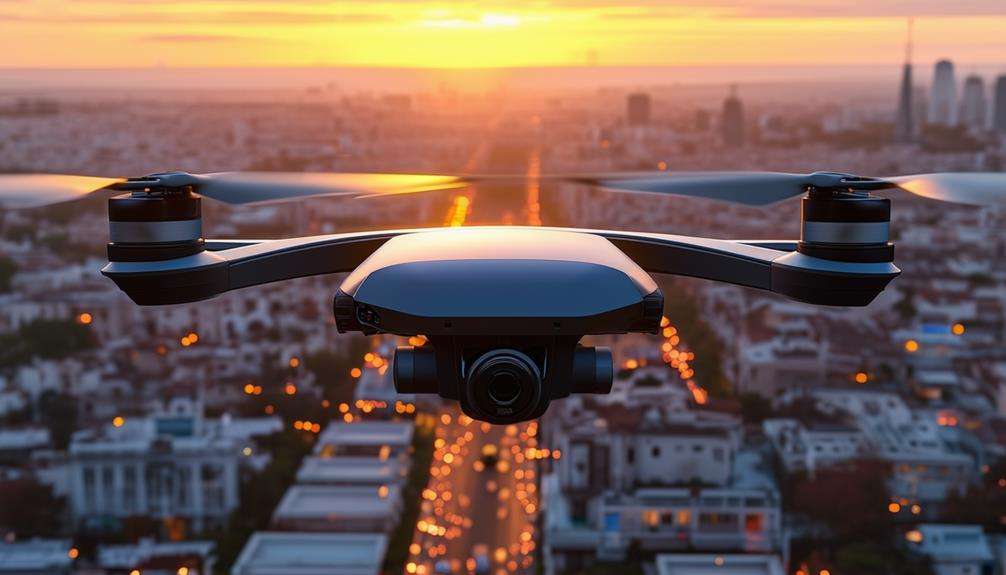Top Applications of Uavs: Revolutionizing Industries With Drone Technology
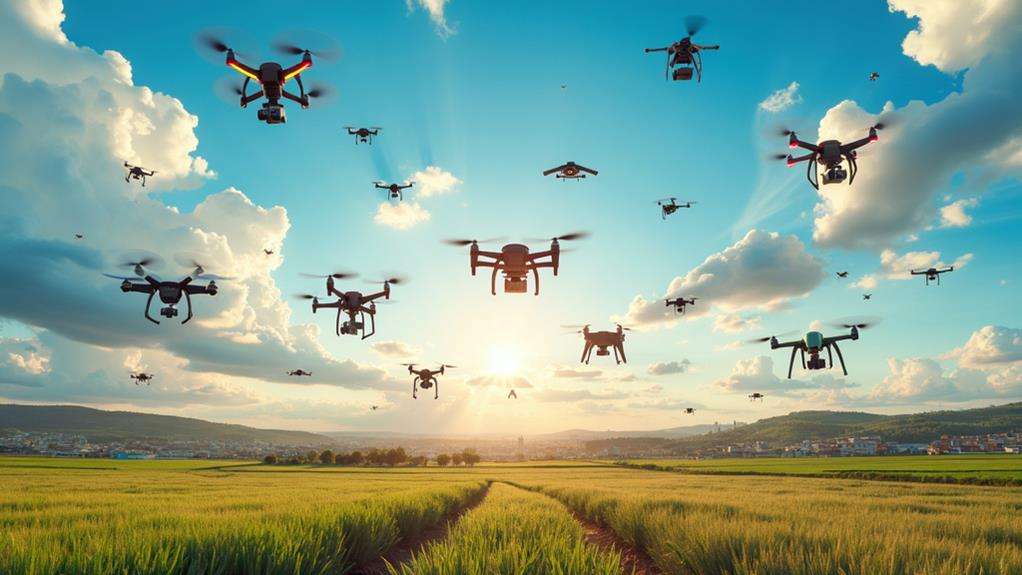
Unmanned Aerial Vehicles (UAVs), or drones, are revolutionizing numerous industries with their transformative applications. In construction, drones provide unparalleled efficiency in project management and inspections, offering real-time data and enhancing overall productivity. In agriculture, they enable precise crop monitoring and advanced irrigation techniques, optimizing resource use and yields. The energy sector benefits from reduced inspection costs and improved data accuracy, enhancing safety and operational efficiency. Beyond these areas, drones are also reshaping security, logistics, and environmental monitoring, delivering real-time data and enabling swift responses. These innovations are setting new standards across various fields, heralding a future of enhanced efficiency and effectiveness.
Construction and Infrastructure
In the construction and infrastructure sectors, drones have revolutionized project management and safety protocols. Utilizing drones for infrastructure inspection allows for detailed aerial surveys and real-time data collection, significantly enhancing decision-making efficiency. These aerial inspections minimize the need for manual checks, especially in challenging areas like rooftops and tall structures, considerably reducing the risk of on-site accidents.
Drones equipped with high-resolution cameras can swiftly measure and transmit survey data, enabling the verification of completed projects against original designs with exceptional accuracy. This precise data collection accelerates the inspection process from days to mere hours, reducing both time and costs by up to 50% compared to traditional methods.
In construction, drones facilitate the early detection of structural issues and maintenance requirements, allowing for timely repairs and preventing costly future damages. Integrating drones into your project management toolkit not only enhances safety and efficiency but also optimizes resource allocation in previously unimaginable ways. By embracing these technological advancements, you can stay ahead in the ever-evolving construction and infrastructure landscape.
Energy and Resource Management
The energy and resource management sectors are experiencing transformative changes thanks to drone technology. Drones have revolutionized inspections, maintenance, and data collection, significantly reducing costs and environmental impact. Traditional helicopter inspections were expensive and posed ecological concerns, but drones have cut these costs by up to 90%, offering a more sustainable alternative.
Drones enhance the speed and precision of inspecting renewable energy sources such as solar panels and wind turbines. They swiftly detect faults and maintenance needs, greatly boosting productivity. Equipped with thermal imaging technology, drones can identify gas leaks in pipelines, ensuring immediate alerts to potential hazards and enhancing safety.
By covering vast areas quickly, drones reduce risks to human life during critical infrastructure inspections, such as those of power lines and oil rigs. This not only enhances safety but also maintains operational efficiency. The improved data collection and analysis capabilities of drones facilitate more informed decision-making, optimizing resource management and allocation.
| Benefit | Impact | Emotion |
|---|---|---|
| Cost Reduction | Up to 90% savings | Relief |
| Enhanced Safety | Minimized human risk | Confidence |
| Higher Productivity | Faster fault detection | Excitement |
Drones in energy and resource management represent a transformative leap forward, beyond just a technological upgrade.
Agriculture and Farming
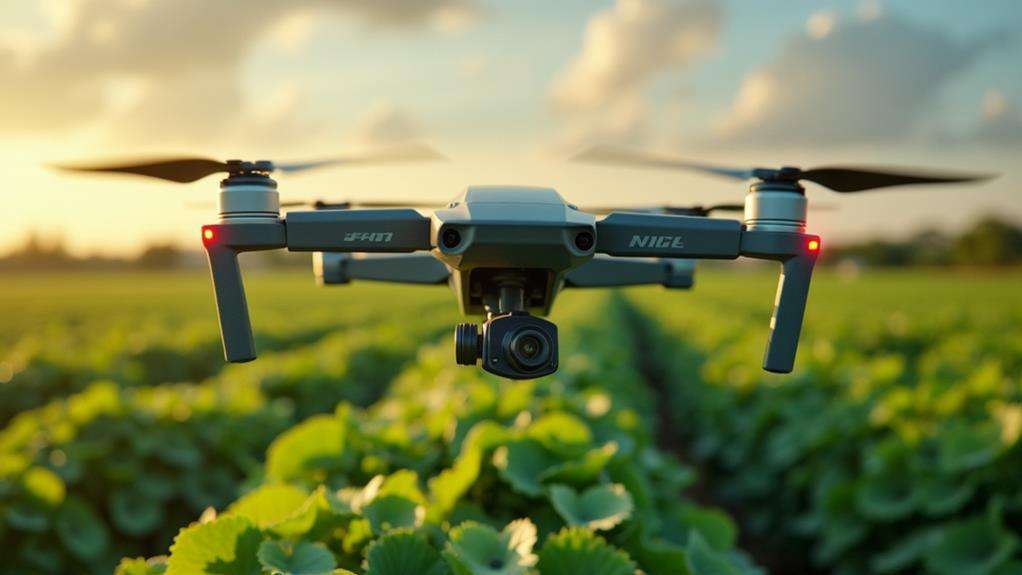
In agriculture and farming, drones are revolutionizing the industry by enabling precision crop monitoring, efficient irrigation management, and advanced pest detection solutions. Equipped with multispectral and thermal cameras, drones can quickly identify nutrient deficiencies and plant diseases, allowing for targeted treatments that enhance crop health. Additionally, drones can optimize irrigation, reducing water usage by up to 30% and minimizing the need for excessive pesticides and fertilizers, thereby promoting sustainability.
Precision Crop Monitoring
Advancements in UAV technology have provided farmers with a transformative tool for precision crop monitoring, fundamentally changing how fields are managed. Drones equipped with multispectral cameras can capture detailed data on crop health, offering real-time insights into nutrient deficiencies and pest infestations. This early detection capability can enhance agricultural yields by up to 15%.
Precision crop monitoring with drones allows for rapid coverage of large areas, providing detailed aerial imagery that surpasses traditional methods. This high-resolution data helps optimize irrigation and target the application of fertilizers and pesticides more effectively. Real-time data analysis enables informed decision-making, maximizing both productivity and sustainability.
Additionally, drones improve safety by monitoring hard-to-reach areas without the need for manual inspections. They can assess soil moisture levels and irrigation efficiency, reducing costs associated with over-irrigation. Integrating drones with GPS-guided equipment further enhances resource management and yield prediction. This comprehensive approach ensures efficient field management, leading to better yields and a more sustainable farming operation.
Efficient Irrigation Management
Efficient irrigation management in agriculture benefits significantly from UAV technology, transforming water resource utilization. Drones equipped with multispectral cameras can assess crop health and soil moisture levels, enabling optimized irrigation practices and reducing water usage by up to 30%. By providing real-time aerial imagery, UAVs help identify areas requiring additional irrigation or those with excess moisture, allowing for targeted watering and minimizing waste.
The integration of drones with GPS technology allows for precise field mapping, facilitating the design of efficient irrigation systems that distribute water evenly. Drones can also monitor irrigation systems for leaks and malfunctions, ensuring timely maintenance and preventing water loss. This proactive approach can lead to substantial cost savings and improved irrigation management.
Utilizing drones for irrigation management can increase crop yields by up to 15% due to improved water application practices and enhanced plant health monitoring. Here's a summary:
| Benefits of UAVs in Irrigation Management | Impact |
|---|---|
| Reduced water usage by up to 30% | Cost savings and sustainability |
| Real-time aerial imagery | Targeted irrigation, reduced waste |
| GPS technology integration | Precise field mapping, efficient water distribution |
| Maintenance monitoring | Leak detection, timely repairs |
| Increased crop yields by up to 15% | Improved crop health, higher productivity |
This concise yet comprehensive approach ensures semantic accuracy, completeness, consistency, conciseness, relevance, interoperability, and trustworthiness.
Pest Detection Solutions
UAV technology is revolutionizing pest detection in agriculture and farming, offering unmatched efficiency and accuracy. Drones equipped with multispectral cameras can survey extensive fields swiftly, capturing aerial data that reveals crop health and highlights areas of stress caused by pests. This early detection is critical for reducing crop loss.
Studies indicate that drone technology can enhance pest detection accuracy by up to 90%, significantly surpassing traditional scouting methods. This precision allows farmers to optimize pesticide application, using chemicals only where necessary and minimizing environmental impact.
Real-time data and imagery from drones enable immediate, informed decisions on pest management strategies. The integration of AI and machine learning further augments these capabilities, allowing drones to identify specific pest species. This targeted approach ensures more effective resource allocation, safeguarding crops with pinpoint accuracy.
Incorporating UAVs into agricultural practices can transform crop health maintenance and pest management, leading to higher yields and more sustainable farming methods.
Security and Surveillance
In the field of security and surveillance, drones have transformed the way we monitor and secure expansive areas. Leveraging advanced drone technology enables real-time aerial monitoring that significantly enhances efficiency and accelerates incident response. Outfitted with high-resolution cameras and thermal imaging, drones deliver 24/7 surveillance capabilities, even under low-light conditions.
Here are four key benefits of employing drones for security and surveillance:
- Real-time Monitoring: Drones provide immediate aerial perspectives, allowing for the swift identification of potential threats and timely intervention.
- Increased Efficiency: Drones can cover extensive areas rapidly, minimizing the time and manpower required compared to traditional ground patrols.
- Enhanced Incident Response: Achieve instant situational awareness, enabling security personnel to react more quickly and effectively during incidents.
- Cost Savings: Reduce operational expenses by lessening the reliance on extensive ground patrols and mitigating risks associated with on-ground surveillance activities.
Insurance and Claims
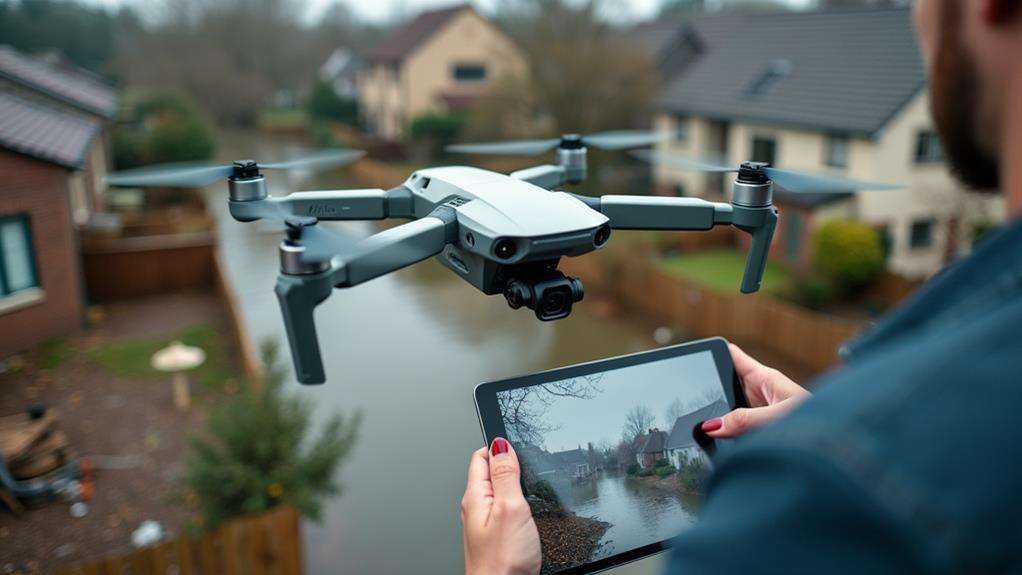
Drones can revolutionize the assessment of damage and the processing of insurance claims. Through aerial inspections, high-resolution imagery and videos can be rapidly captured, facilitating the verification of claims and reducing instances of fraud. This technology accelerates settlement times and enables safer, remote evaluations of hard-to-reach areas, thereby significantly improving efficiency.
Aerial Damage Assessment
Leveraging drone technology for aerial damage assessment is transforming the insurance industry. By deploying drones, you can capture high-resolution imagery of damaged properties swiftly, enabling more efficient and accurate insurance claim assessments. This approach accelerates the evaluation process and minimizes the risk of human error.
Here's how drones are enhancing aerial damage assessment:
- High-Resolution Imagery: Drones provide detailed aerial views, helping identify damages that might be missed during ground inspections.
- Thermal Imaging: Equipped with thermal cameras, drones can detect hidden issues like water leaks or structural weaknesses, ensuring comprehensive damage assessments.
- Cost Efficiency: Utilizing drones reduces labor costs and inspection times by up to 80%, leading to substantial savings.
- GIS Integration: Drones collect data that integrates seamlessly with GIS, allowing for precise maps and models for accurate damage assessments and repair estimates.
Streamlined Claims Processing
Drone technology is transforming the insurance industry's claims processing by enabling swift and detailed aerial inspections. With drone operations, damages can be assessed quickly and efficiently, reducing processing times from days to mere hours. This rapid turnaround enhances customer satisfaction and operational efficiency.
High-resolution cameras mounted on drones capture detailed imagery, allowing for accurate damage evaluation without physical site visits. This technological advancement minimizes operational costs and streamlines the entire claims management process. Integrating drones into your workflow can significantly reduce fraud, as the high-quality images and data provide verifiable evidence of property conditions before and after incidents.
Studies indicate that using drones in claims management can reduce overall claims costs by up to 20%. These savings benefit both insurers and policyholders, making drone operations a smart investment. The aerial inspections conducted by drones are clear, comprehensive, and efficient, revolutionizing claims handling and improving the overall efficiency of the insurance industry.
Logistics and Transportation
Logistics and transportation have been revolutionized with the increasing use of UAVs by companies like Amazon and UPS. These logistics firms are employing drone delivery to significantly enhance efficiency, reducing transit times compared to traditional ground transportation. Imagine receiving a package within minutes instead of days. UAVs, capable of flying up to 60 miles per hour, make this possible in both urban centers and hard-to-reach locations.
Key benefits include:
- Faster Deliveries: Drones can quickly cover distances, ensuring rapid delivery of goods, including urgent medical supplies.
- Cost Reduction: Companies can cut delivery expenses by up to 70% by reducing fuel consumption and vehicle maintenance.
- Emergency Response: UAVs can deliver essential supplies to disaster-stricken or isolated areas, improving emergency response times.
- Environmental Impact: With electric propulsion systems, drones help reduce the carbon footprint, supporting sustainability goals.
Environmental Monitoring
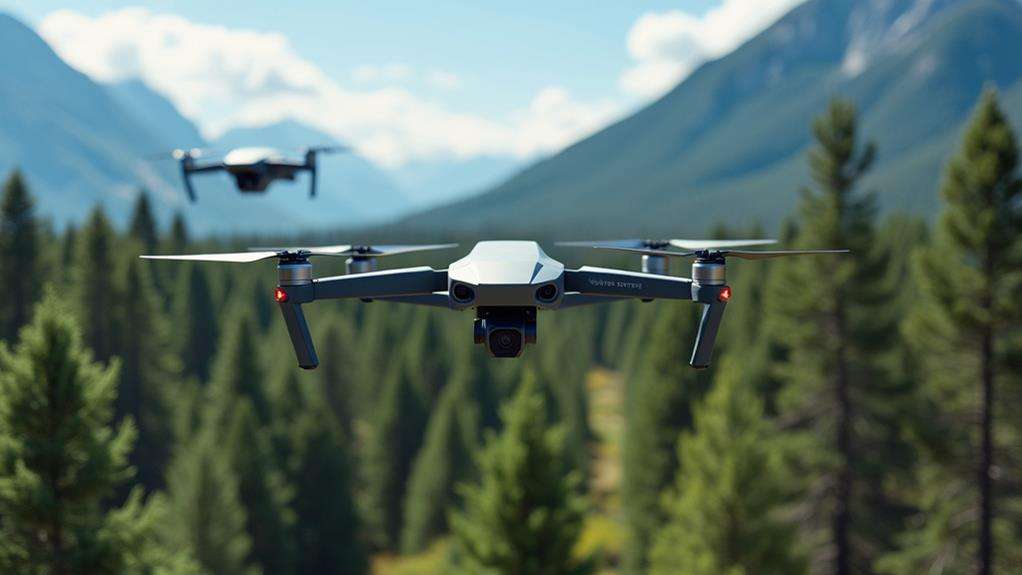
Unmanned Aerial Vehicles (UAVs) have not only revolutionized logistics and transportation but also play a transformative role in environmental monitoring. These drones are essential tools for tracking ecosystem health, assessing biodiversity, and observing habitat conditions from an aerial perspective. Equipped with advanced multispectral cameras, they can detect vegetation health and soil moisture levels, supporting sustainable agricultural practices and ensuring ecosystem vitality.
In terms of pollution detection, drones provide real-time monitoring of air and water quality, which significantly enhances environmental compliance and disaster response efforts. They offer crucial data on deforestation rates and the impacts of climate change on various habitats, bolstering conservation initiatives. Furthermore, drones are vital for conducting wildlife population surveys, allowing researchers to gather data on species distribution and behavior with minimal disturbance to natural environments.
Here's a quick overview of key applications:
| Application | Benefits | Keywords |
|---|---|---|
| Ecosystem Health | Tracks biodiversity, habitat | ecosystem health, biodiversity |
| Pollution Detection | Monitors air and water quality | pollution detection |
| Wildlife Population Surveys | Minimal disturbance for data collection | wildlife population surveys |
| Sustainable Agriculture | Monitors vegetation and soil moisture | multispectral cameras, sustainable agriculture |
Emergency Response and Disaster Management
In emergency response and disaster management, UAVs have become essential tools for rapid deployment and real-time data collection. When disaster strikes, drones enable responders to swiftly and efficiently assess damage and locate victims. Here's how UAVs are transforming emergency response efforts:
- Real-time data collection: Drones provide immediate aerial views, enabling responders to make informed decisions quickly.
- Search and rescue: Equipped with thermal imaging technology, drones can detect heat signatures over large areas, significantly enhancing search and rescue operations in difficult terrains.
- Supply delivery: Drones can deliver essential supplies such as food, water, and medical aid to affected areas, significantly improving response times and effectiveness.
- Coordination and safety: UAVs enhance coordination among responders, ensuring timely assistance and improving public safety.

